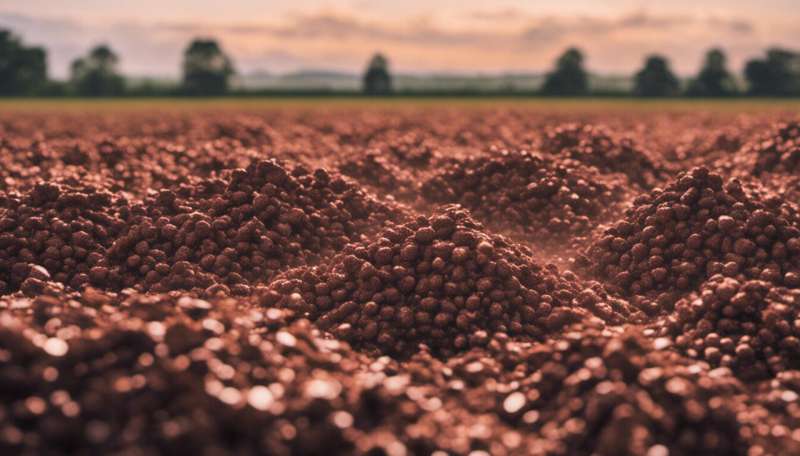Nutrient recovery from biowaste for mineral fertiliser production

Water, food and resource scarcity, alongside increasing waste are among the main challenges humanity will face in the years to come. To take advantage of the waste, European researchers have come up with a novel nutrient management solution.
Biowaste – the waste generated from different biobased sources – accounts for around 20 % of the waste produced in the EU and can serve as a potential resource of valuable chemical compounds, supporting a circular economy. Therefore, biowaste valorisation is considered an alternative, attractive approach in waste management policies.
A new generation of fertilisers
Most fertilisers currently rely heavily on fossil mineral resources for nutrient supply. The idea behind the EU-funded NEWFERT project was to build up an innovative concept for the fertiliser industry that essentially turns ashes of different origins and livestock effluent into a new generation of fertilisers. "Our aim was to develop an industrial fertiliser nutrient recycling scheme that combines fossil with biobased materials,″ explains project coordinator and R&D Director of Fertiberia, Javier Brañas.
Researchers identified and analysed more than 45 different types of biowaste from different areas of Europe and selected 10 for introduction into the fertiliser production process based on their physical and chemical properties. Ashes containing high phosphorous or potassium content and nutrient availability were used directly for fertiliser production. In the case of ashes with insoluble nutrients, NewFert partners developed new biorefining technologies with low input and energy cost to increase nutrient recovery such as phosphate.
Furthermore, to free phosphate minerals (struvite) and nitrogen from pig slurry in a more cost-effective way, the scientists developed a new process. This reduced costs by substituting the traditional reagent with the action of bacteria that grow naturally in the medium and building a more efficient electrolysis cell for nitrogen recovery. These novel technologies maximised extraction capacity and enabled NewFert partners to obtain appropriate products for the industry. "Collectively, these raw materials allowed us to produce mineral fertilisers at the pilot scale with 15 % of nutrients from biowaste recycling,″ states Brañas.
Overcoming obstacles for productions of biobased fertilisers
Contrary to popular misconception, not all biowaste can be used effectively as fertilisers. Suitable biowaste must contain high levels of nutrients available for plant uptake and be free of undesirable components like pathogens, toxins and heavy metals.
Additional hurdles and bottlenecks affecting transport, logistics and infrastructure in the biomass feedstock supply systems must also be overcome. According to Brañas: "The next generation of fertiliser plants must be built to deal with multiple biomass feedstock in order to produce marketable materials from biowaste.″ To facilitate this, NewFert created a guide to preliminary acceptance criteria for determining which biowaste can be used as raw material for fertiliser production.
Overall, the project supports Europe's intended transformation towards a sustainable circular economy with resource-efficient production schemes. Implementation of the NewFert technology at European level is expected to reduce raw material dependency and the import of phosphate and potassium. This could mean the reduction of import costs, the improvement of the management of biowaste in a sustainable way through circular economy, and consequently the promotion and diversification of employment in rural communities throughout Europe.
As a next step, Brañas envisages a demonstration project at the European level, involving farmers and biowaste producers in validating the new fertilisers and technology from an agronomic, industrial and economic point of view. "Paramount to the successful commercial deployment of these new green mineral fertilisers is generating consumer confidence,″ he points out.
Provided by CORDIS




















